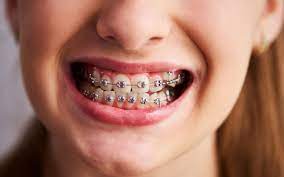Introduction
Dental braces have long been a crucial tool in orthodontics, helping to align and correct teeth for better oral health and aesthetics. For parents, deciding when to initiate orthodontic treatment for their children can be both important and challenging. Understanding the optimal timing for braces is crucial to ensure effective treatment and long-term dental health. This article explores the factors that influence the decision to start Dental Braces Dubai for kids, aiming to provide clarity on when the right time might be.
Factors Influencing the Timing
1. Orthodontic Evaluation:
Before considering braces, a comprehensive orthodontic evaluation is necessary. This typically involves an assessment by an orthodontist to determine if braces are needed, and if so, when treatment should begin. The evaluation considers factors such as the alignment of teeth, jaw structure, and overall dental health.
2. Age and Dental Development:
The timing of braces often correlates with dental development. While there is no fixed age for starting orthodontic treatment, most children begin between the ages of 9 to 14 years old. At this stage, the permanent teeth have largely erupted, and the jaw is still growing, making it easier to guide teeth into their proper positions.
3. Severity of Dental Issues:
The severity of the orthodontic issues plays a significant role in determining when to start braces. If dental problems such as overcrowding, gaps, or misalignment are severe, early intervention might be recommended to prevent further complications and achieve optimal results.
4. Behavioral and Emotional Readiness:
Starting braces involves commitment and cooperation from the child. Factors such as their ability to maintain good oral hygiene, follow orthodontic instructions, and cope with potential discomfort are crucial considerations. Emotional readiness is also important as wearing braces can affect self-esteem and confidence.
5. Treatment Goals:
The goals of orthodontic treatment vary from correcting cosmetic issues to improving dental function and overall oral health. The timing of braces may vary depending on these objectives and the specific needs of the child.
Benefits of Early Intervention
1. Preventing Complications:
Early orthodontic intervention can prevent more severe dental problems in the future. Addressing issues like overcrowding or malocclusions early can reduce the need for extensive treatment later in life.
2. Facilitating Jaw Growth:
Younger children often benefit from braces because their jaws are still developing. Braces can help guide proper jaw growth and alignment, potentially reducing the need for surgical intervention later.
3. Improved Oral Health:
Correctly aligned teeth are easier to clean, reducing the risk of cavities, gum disease, and other oral health issues. Braces contribute to long-term dental health by improving bite function and alignment.
Conclusion
Deciding when to start dental braces for kids involves careful consideration of various factors, including age, dental development, severity of issues, and individual readiness. Early intervention can often yield better outcomes, but it is essential to consult with an orthodontist to determine the most suitable timing for treatment. By addressing orthodontic issues early, parents can help their children achieve not only straighter teeth but also improved oral health and confidence. Ultimately, the decision should prioritize both immediate needs and long-term dental well-being, ensuring that each child receives timely and effective orthodontic care.





Comments